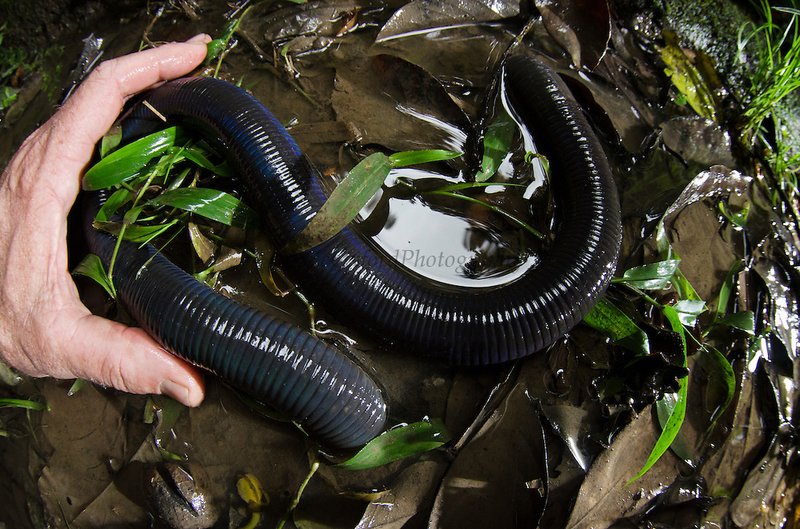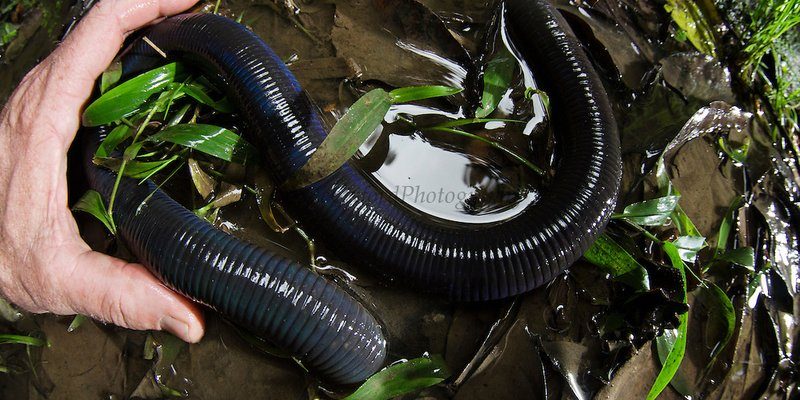
These fascinating creatures are native to the Palouse region of the Pacific Northwest, primarily found in Washington, Idaho, and parts of Oregon. Their populations have been the focus of ecological studies and conservation efforts, as they represent a vital component of their environment. As we dive into this topic, let’s explore the ecological benefits and drawbacks of Giant Palouse Earthworm populations and what they mean for our ecosystem.
What Are Giant Palouse Earthworms?
The Giant Palouse Earthworm (Driloleirus americanus) is no ordinary worm. They can grow up to three feet long! If that doesn’t sound impressive, you might picture them as the gentle giants of the soil. These worms are unique because they live deep underground, creating extensive burrows that play a pivotal role in soil aeration and nutrient cycling.
You might be wondering why they’re considered so special. For starters, they can thrive in specific conditions, primarily in the rich, loamy soil of the Palouse. This soil is known for its fertility, which supports a diverse range of crops. Sadly, habitat destruction and agricultural practices have led to their decline, making their presence an indicator of ecological health in this region.
The Ecological Benefits of Giant Palouse Earthworms
Giant Palouse Earthworms provide several ecological benefits that make them invaluable to the ecosystem. Here are a few key contributions:
- Soil Aeration: Their burrowing behavior helps to aerate the soil, allowing air and water to reach plant roots more effectively. This dramatically improves plant growth and health.
- Nutrient Cycling: As these worms consume organic matter, they break it down and release nutrients back into the soil. This process enriches the soil, making it more fertile for crops and native plants.
- Pest Control: By supporting a healthy soil environment, they also indirectly help control pests. Healthy soil fosters a diverse ecosystem, which can outcompete harmful species.
Isn’t it fascinating to think about how much life is hidden beneath our feet? Healthy populations of these earthworms can lead to thriving ecosystems. Their presence indicates a balanced environment and is crucial for sustainable agriculture.
Drawbacks of Giant Palouse Earthworm Populations
Despite their benefits, Giant Palouse Earthworms also come with drawbacks. It’s essential to look at both sides of the coin, as understanding these downsides can guide better ecological practices.
- Overpopulation Risks: In some cases, if Giant Palouse Earthworm populations grow too large, they can disrupt local soil dynamics. This overpopulation can lead to soil erosion as their extensive burrowing can compromise soil structure.
- Habitat Competition: They might compete with other essential soil organisms for resources. If their numbers exceed balance, it can lead to a decline in biodiversity within the soil.
- Environmental Sensitivity: They are highly sensitive to environmental changes. Activities like intensive farming or pollution can severely impact their populations. This leads to greater ecological imbalance if they decline.
So, here’s the thing: while these worms play a crucial role, their populations need to be managed carefully to ensure a healthy ecosystem. Striking the right balance is key in conservation efforts.
Conservation Status of Giant Palouse Earthworms
Due to habitat loss and changing agricultural landscapes, the Giant Palouse Earthworm is considered a threatened species. Conservation efforts are essential to maintain their populations and the health of their ecosystem. This prompts some vital questions: What can be done to protect them? How can we create a sustainable environment that allows their populations to thrive?
Conservationists are actively working on various initiatives aimed at restoring their natural habitat. This includes promoting sustainable farming practices and encouraging landowners to adopt methods that protect these unique earthworms. Efforts like establishing conservation easements help preserve their habitat from further development.
Additionally, raising awareness within the local community about their importance is crucial. When people understand that the Giant Palouse Earthworm is not just a worm but a vital player in our ecosystem, they may be more inclined to support conservation efforts.
How Giant Palouse Earthworms Impact Agriculture
Let’s talk about agriculture. In farming communities, Giant Palouse Earthworms can have a significant impact, both positive and negative.
On the positive side, these worms improve soil quality. Healthy soil leads to better crop yields, which is a win-win for farmers. Their ability to recycle nutrients makes them valuable allies for those growing crops in the Palouse region. Farmers who recognize their role can adjust their practices to support the worms and, in turn, boost their harvests.
However, if their populations soar, they can alter soil properties and create challenges for farmers. Issues like increased erosion or water drainage problems might arise. This means farmers need to stay vigilant and adopt practices that maintain the balance.
To summarize, collaborating with nature can yield fantastic results for farming, but it requires understanding and managing the relationship with Giant Palouse Earthworms wisely.
In conclusion, Giant Palouse Earthworms are remarkable creatures that offer significant ecological benefits while posing some challenges. Their unique contributions to soil health and agriculture highlight their importance, especially in the Palouse region. At the same time, their sensitivity to environmental changes necessitates careful management and conservation efforts.
It’s vital for us to appreciate these underground allies and consider how our practices impact their populations. By fostering healthier environments, we can ensure that Giant Palouse Earthworms continue to thrive, supporting the delicate balance of our ecosystems for generations to come. So, the next time you spot a worm, take a moment to think about the hidden life and the vital role it plays in keeping our planet healthy.

